A former post office, this pub bears the name of the famous stamp which marked the birth of the modern postal system.
A print and text about Rowland Hill.
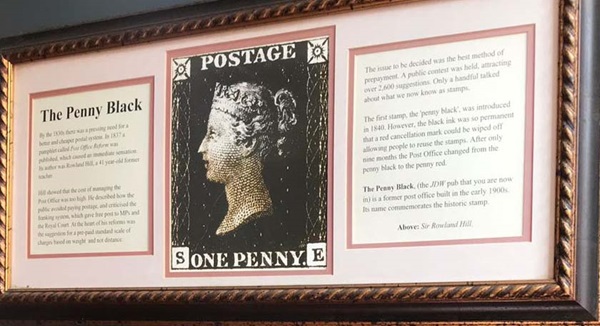
The text reads: By the 1803s there was a pressing need for a better and cheaper postal system. In 1837 a pamphlet called Post Office Reform was published, which caused an immediate sensation. Its author was Rowland Hill, a 41 year-old former teacher.
Hill showed that the cost of managing the post office was too high. He described how the public avoided paying postage, and criticised the franking system, which gave free post to MPs and the Royal Court. At the heart of his reforms was the suggestion for a pre-paid standard scale of charges based on weight and not distance.
The issue to be decided was the best method of prepayment. A public contest was held, attracting over 2,600 suggestions. Only a handful talked about what we now know as stamps.
The first stamp, the ‘penny black’, was introduced in 1840. However, the black ink was so permanent that a red cancellation mark could be wiped off allowing people to reuse the stamps. After only nine months the post office changed from the penny black to the penny red.
The Penny Black, (the JDW pub that you are now in) is a former post office built in the early 1900s. Its name commemorates the historic stamp.
Above: Sir Rowland Hill.
Text about Anthony Trollope.
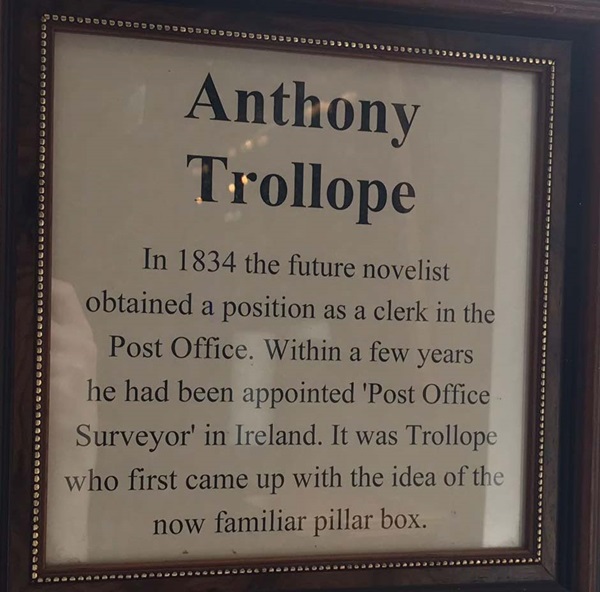
The text reads: In 1834 the future novelist obtained a position as a clerk in the post office. Within a few years he had been appointed post office surveyor in Ireland. It was Trollope who first came up with the idea of the now familiar pillar box.
Text about Flora Thompson.
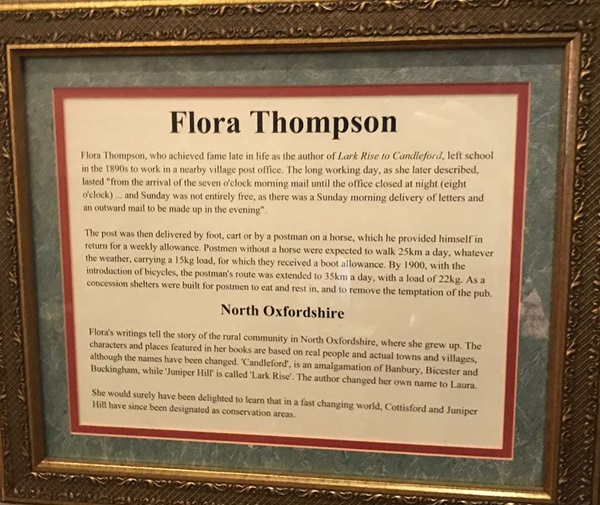
The text reads: Flora Thompson, who achieved fame late in life as the author of Lark Rise to Candleford, left school in the 1890s to work in a nearby village post office. The long working day, as she later described, lasted “from the arrival of the seven o’clock morning mail until the office closed at night (eight o’clock) … and Sunday was not entirely free, as there was a Sunday morning delivery of letters and an outward mail to be made up in the evening.”
The post was then delivered by foot, cart or by a postman on a horse, which he provided himself in return for a weekly allowance. Postmen without a horse were expected to walk 25km a day, whatever the weather, carrying a 15kg load, for which they received a boot allowance. By 1900, with the introduction of bicycles, the postman’s route was extended to 35km a day, with a load of 22kg. As a concession shelters were built for postmen to eat and rest in, and to remove the temptation of the pub.
Flora’s writings tell the story of the rural community in North Oxfordshire, where she grew up. The characters and places featured in her books are based on real people and actual towns and villages. Although the names have been changed. ‘Candleford’, is an amalgamation of Banbury, Bicester and Buckingham, while ‘Juniper Hill’ is called ‘Lark Rise’. The author changed her own name to Laura.
She would surely have been delighted to learn that in a fast changing world, Cottisford and Juniper Hill have since been designated as conservation areas.
A photograph of Bicester, c1910.
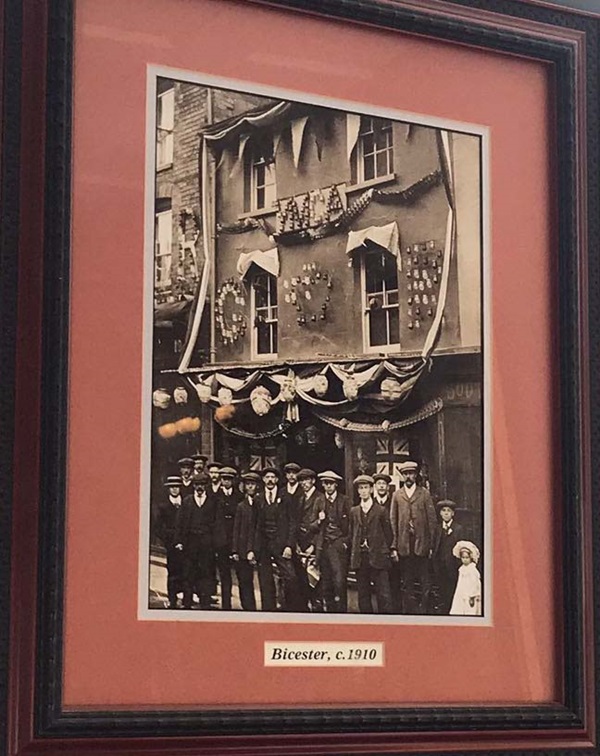
A photograph of Market Square, Bicester, c1930.
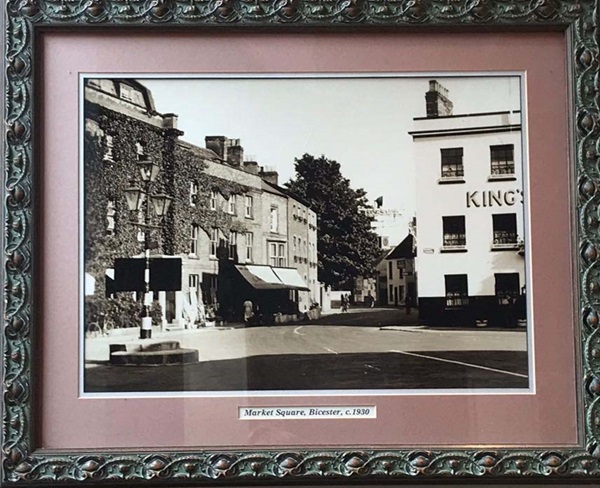
A sculpture created for the pub, inspired by pigeon post.
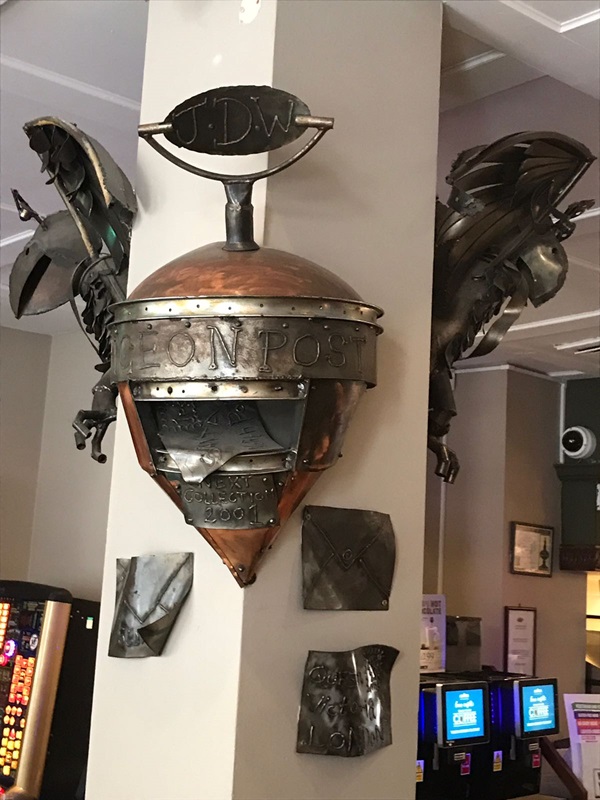
External photograph of the building – main entrance.
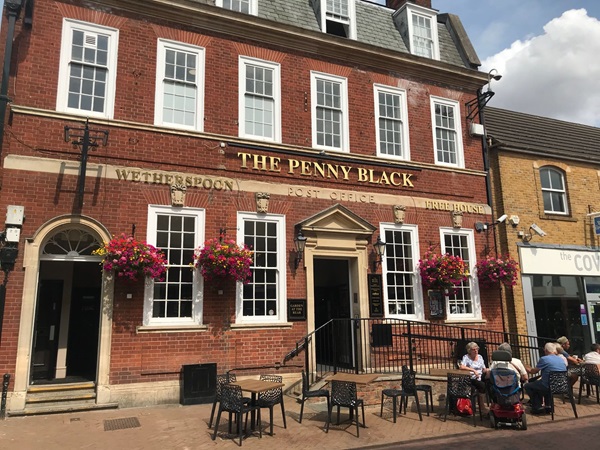
If you have information on the history of this pub, then we’d like you to share it with us. Please e-mail all information to: pubhistories@jdwetherspoon.co.uk